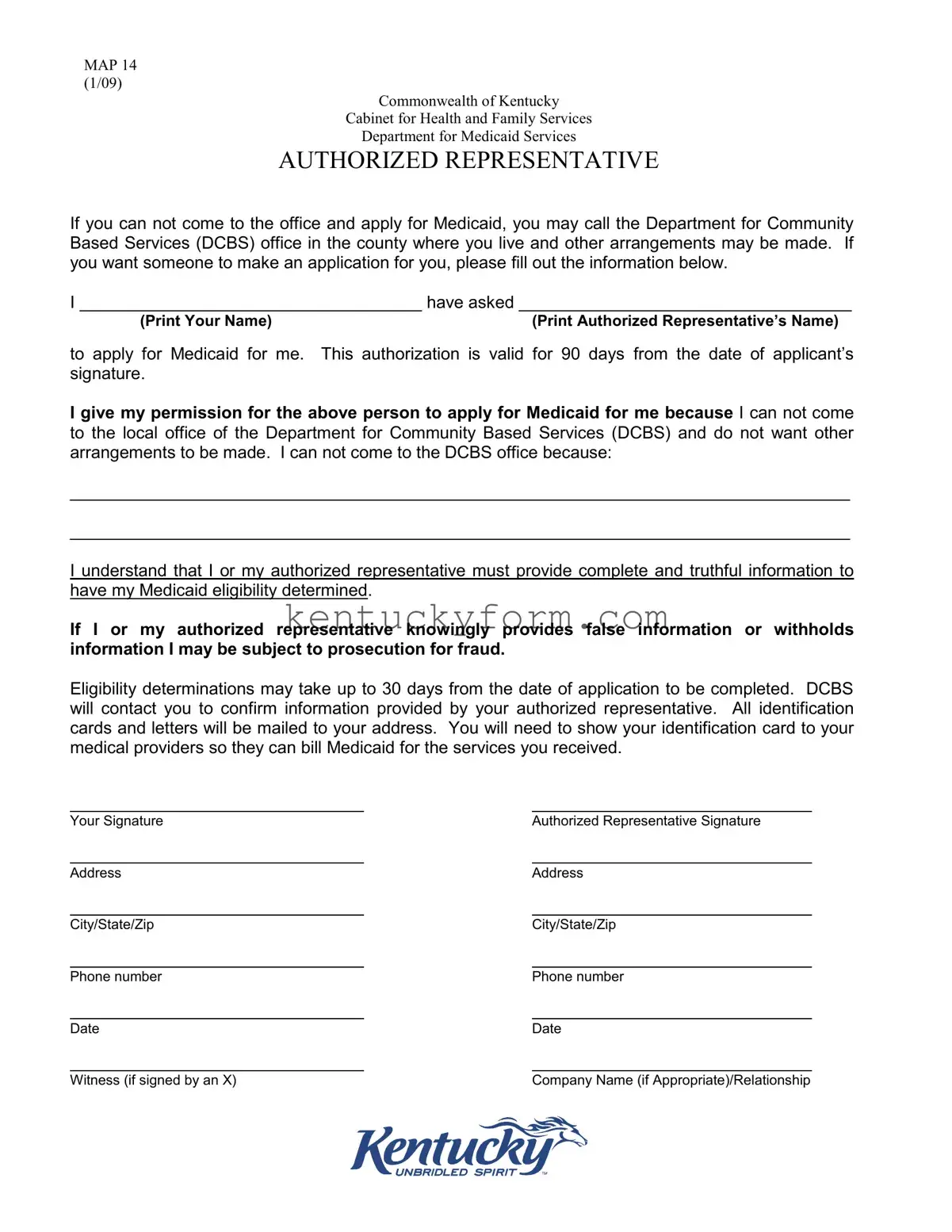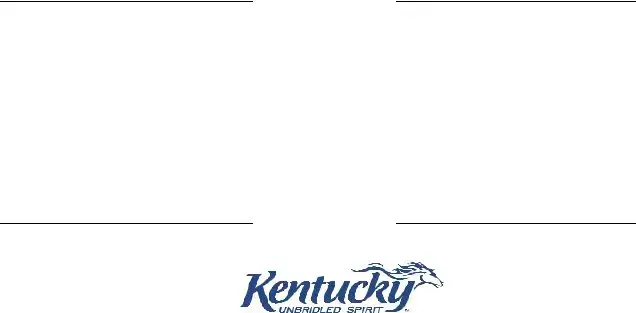The Power of Attorney document bears a resemblance to the Map 14 Kentucky form in several ways. Both documents allow an individual to appoint someone else to manage their affairs. While the Power of Attorney can encompass a wide range of responsibilities, including financial and legal decisions, the Map 14 form specifically authorizes another person to apply for Medicaid on behalf of the applicant. Both documents require signatures from the individual and the appointed representative, illustrating a formal agreement. They also share the need for clarity and truthfulness in the information provided, with potential legal consequences for misinformation.
A Healthcare Proxy is another document similar to the Map 14 form, primarily because it involves selecting an agent to make healthcare decisions on another's behalf. However, the Healthcare Proxy is more comprehensive, covering a broader range of health-related decisions beyond Medicaid application. Like the Map 14 form, a Healthcare Proxy requires the signer to designate another individual for a very personal matter, demonstrating trust and responsibility transfer. Both documents are essential for planning healthcare management when one cannot make decisions independently.
The Medicaid Application itself shares similarities with the Map 14 Kentucky form, as both are directly related to the Medicaid enrollment process. The main application form is where individuals provide personal, financial, and health information to apply for Medicaid benefits. The Map 14 form complements this process by designating an authorized representative to handle the application when the individual is unable. Both forms are integral to accessing Medicaid benefits, requiring accurate and honest information from applicants.
A Release of Information form also parallels the Map 14 form in essence because it involves granting permission to share personal information with third parties. This release allows agencies or individuals to access specific information necessary for a particular purpose, similar to how the Map 14 form allows a designated representative to access and provide personal information for Medicaid application purposes. Both documents serve as vital tools for ensuring proper communication and information exchange under specified circumstances.
The Representative Payee Form used by the Social Security Administration shares a common purpose with the Map 14 form, facilitating assistance on behalf of someone else. This document enables an appointed payee to manage the Social Security benefits of another individual who is unable to do so themselves. Similarly, the Map 14 form allows an authorized representative to handle the Medicaid application process. Each document requires formal authorization to assist individuals in managing their benefits.
An Advance Directive is somewhat related to the Map 14 Kentucky form in that it prepares for a scenario where the individual can no longer make decisions on their own. Though mainly focusing on future healthcare decisions, like end-of-life care, it parallels the Map 14 form’s purpose of appointing another to act on one’s behalf. Both documents reflect proactive planning for personal care and demonstrate the importance of designating trusted individuals to carry out one’s wishes.
The Consent to Treat form found in medical settings is similarly aligned with the Map 14 form’s intentions, as it also involves permission for specific actions to be taken by others. Consent to Treat authorizes medical professionals to provide treatment to the individual, resembling how the Map 14 form permits someone to apply for Medicaid on the individual's behalf. Both are critical in healthcare management, relying on the individual's approval for others to make decisions or take action.
Lastly, a Guardianship Agreement can be compared to the Map 14 Kentucky form due to its arrangement for someone to make legal and welfare decisions for another, especially in cases where the individual cannot make those decisions themselves. While guardianship is a more comprehensive and permanent arrangement, often decided by a court, it shares the core principle of appointing another to manage personal affairs, similar to how the Map 14 form authorizes a representative for Medicaid application.

